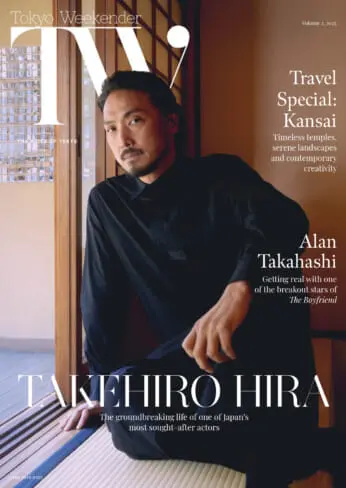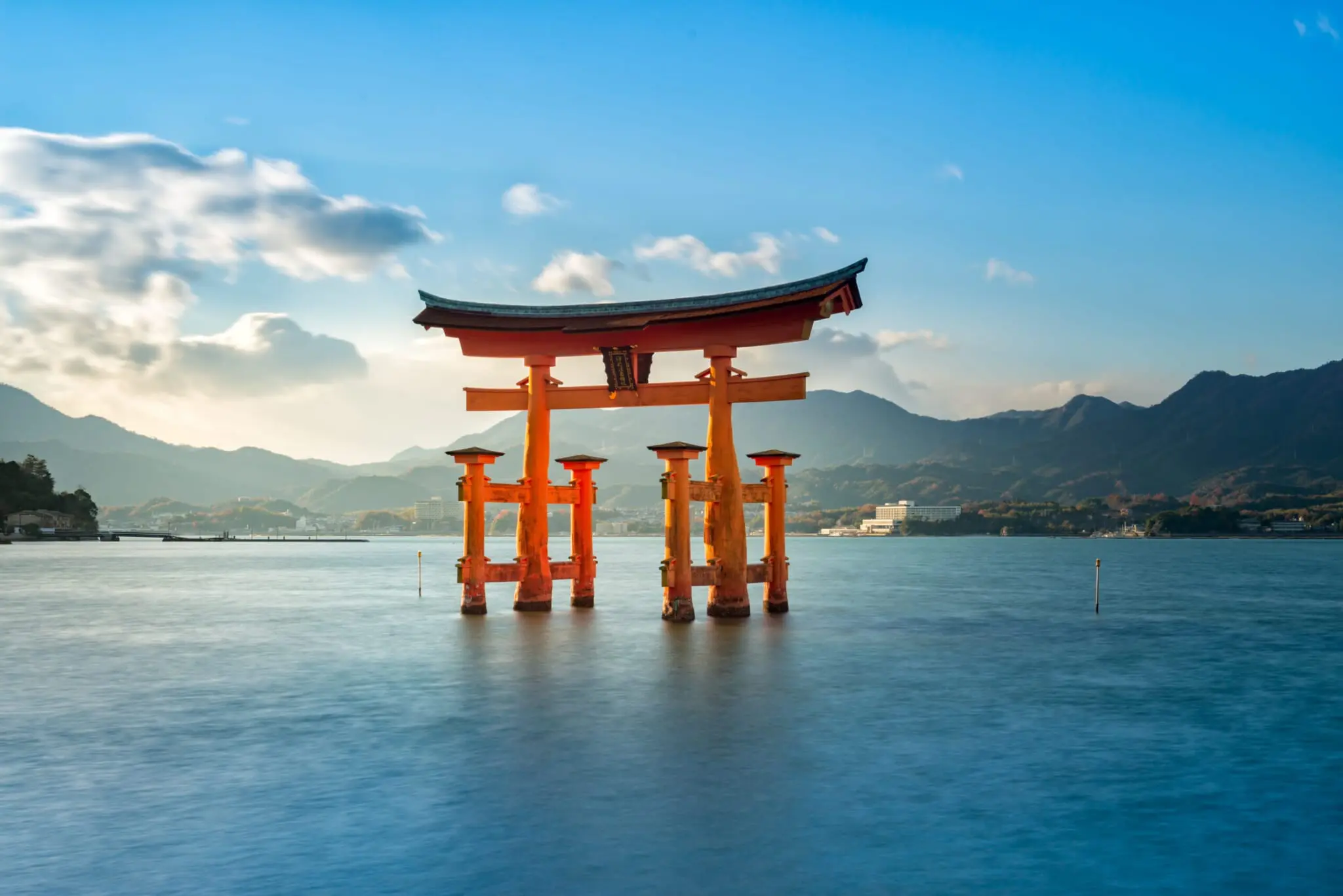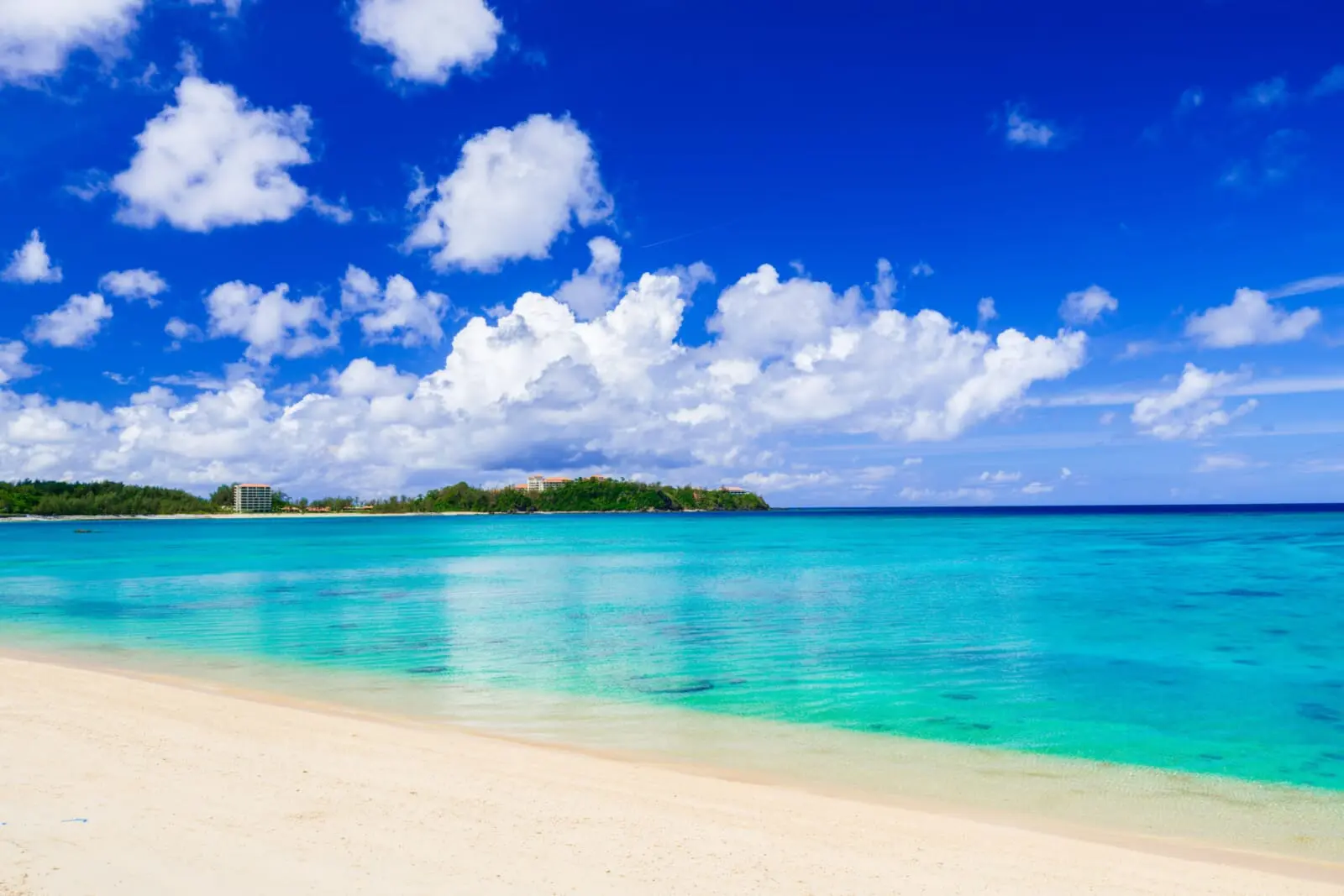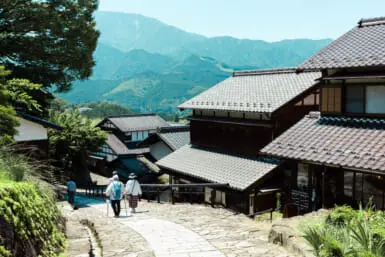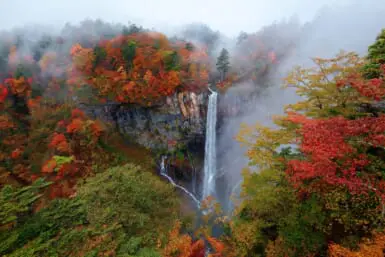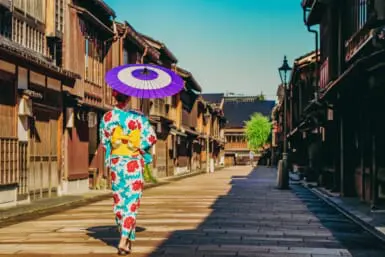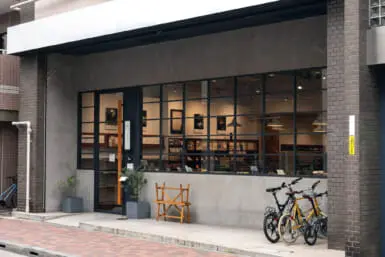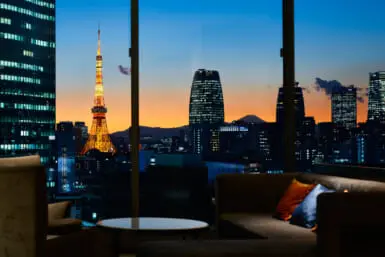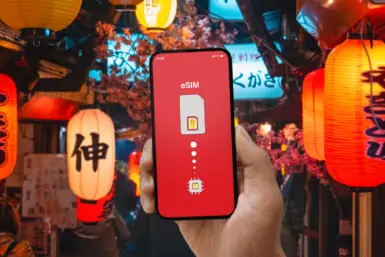Japan in September: Travel Overview
- Weather: September is a transitional month from summer to autumn, with warm temperatures gradually cooling down. Expect some residual heat, especially in the early part of the month, along with the possibility of typhoons. Daytime temperatures usually range between 23° and 28° Celsius, while evenings can be cooler, particularly in the northern regions.
- September is an ideal time for those looking to enjoy Japan’s natural beauty without the summer crowds. There are fewer people on the beaches, making it a great time for a late summer escape. Early autumn foliage can begin to appear in the northern regions like Hokkaido.
- Events and Festivals: September is packed with traditional festivals and seasonal events. The Kishiwada Danjiri Festival in Osaka is a must-see, known for its thrilling danjiri (large wooden floats) races. Another highlight is the Ohara Hadaka ‘Naked Man’ Festival, a boisterous celebration in Chiba where loincloth-clad men carry mikoshi shrines into the sea to pray for a good autumn harvest.
- Popular travel destinations such as Kyoto and Tokyo can still see significant foot traffic, especially during the Silver Week holiday in mid-September. It’s advisable to book accommodation early.
Popular Activities and Things To Do in September
Beach Escapes
Though summer is winding down, Japan’s beaches are still a prime destination for sun-seekers. September offers warm ocean temperatures and fewer crowds, making it a perfect time for a relaxing beach vacation.
Okinawa
Okinawa’s beaches are legendary, with soft, white sands and vibrant coral reefs. Yonaha Maehama Beach on Miyako Island is often touted as one of Japan’s most beautiful, with its seven kilometers of pure white sand and shallow, turquoise waters. For a more secluded experience, head to Furuzamami Beach on Zamami Island, part of the Kerama Islands, where the water is so clear you can see colorful fish swimming just beneath the surface.
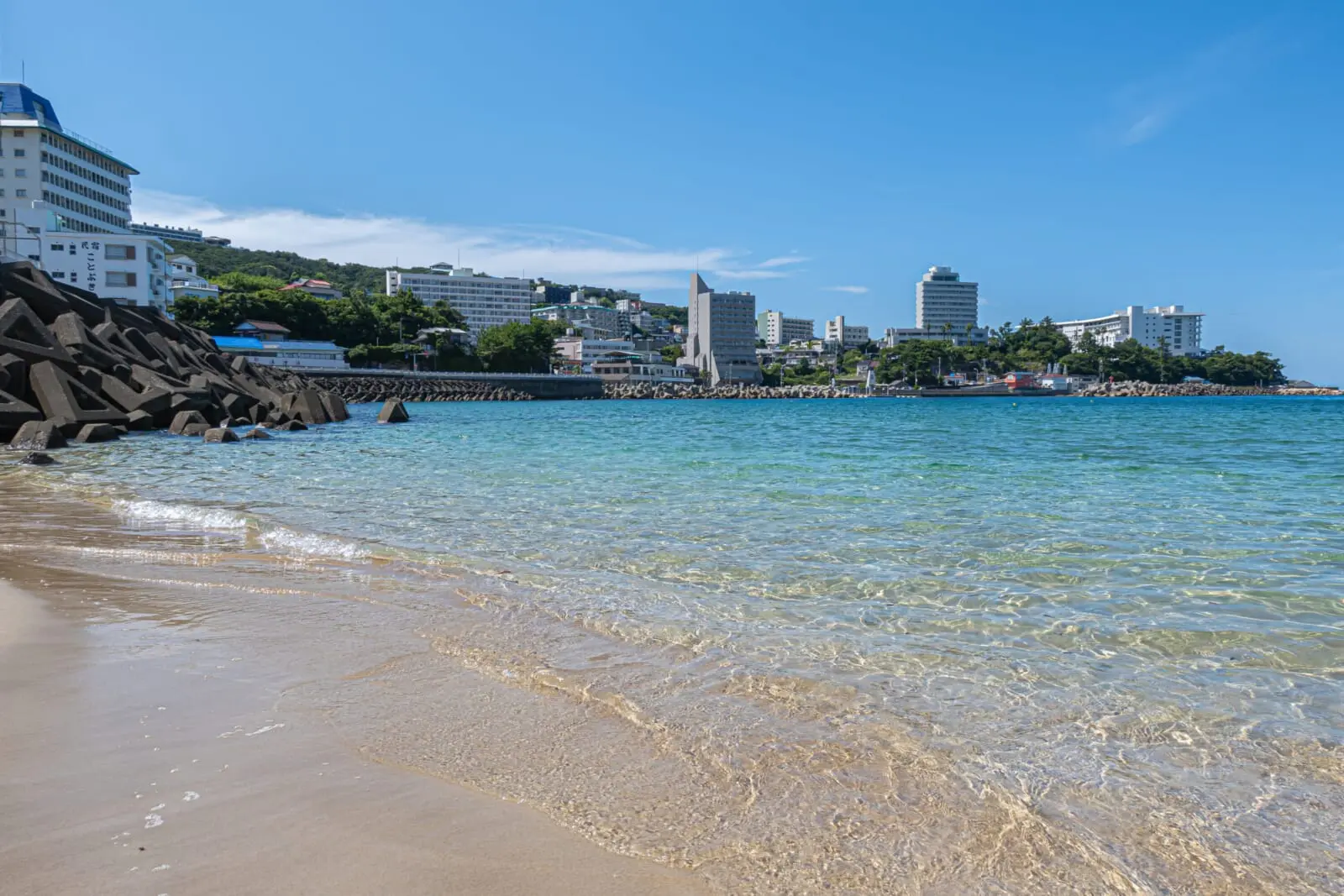
Shirahama Beach, Wakayama
Closer to Japan’s main island, Shirahama Beach is known for its pristine, 800-meter stretch of fine sand imported from Australia. The beach is perfect for swimming and sunbathing, with nearby attractions such as Shirahama Onsen, one of Japan’s oldest hot springs, where you can soak in the waters while enjoying views of the Pacific Ocean.

Kamakura, Kanagawa
Just a short train ride from Tokyo, Kamakura’s beaches, such as Yuigahama and Zaimokuza, offer a mix of natural beauty and cultural experiences. The historic town of Kamakura, with its ancient temples and the iconic Great Buddha, provides a perfect backdrop to a day spent by the sea. The beaches here are popular for surfers and the gentle waves are perfect for beginners. The sunset views over Sagami Bay are simply unforgettable.
Tips & Recommendations
For the ultimate beach experience, consider staying at a beachfront resort or a traditional ryokan with ocean views. Some places offer private access to the beach and amenities such as open-air baths and gourmet dining featuring local seafood. Be sure to check the weather forecast regularly, as September is still within typhoon season.
Autumn Hiking
As the weather cools, Japan’s mountainous regions become a hiker’s paradise. Early autumn hikes offer breathtaking views of the changing foliage, especially in the northern and higher altitude areas.
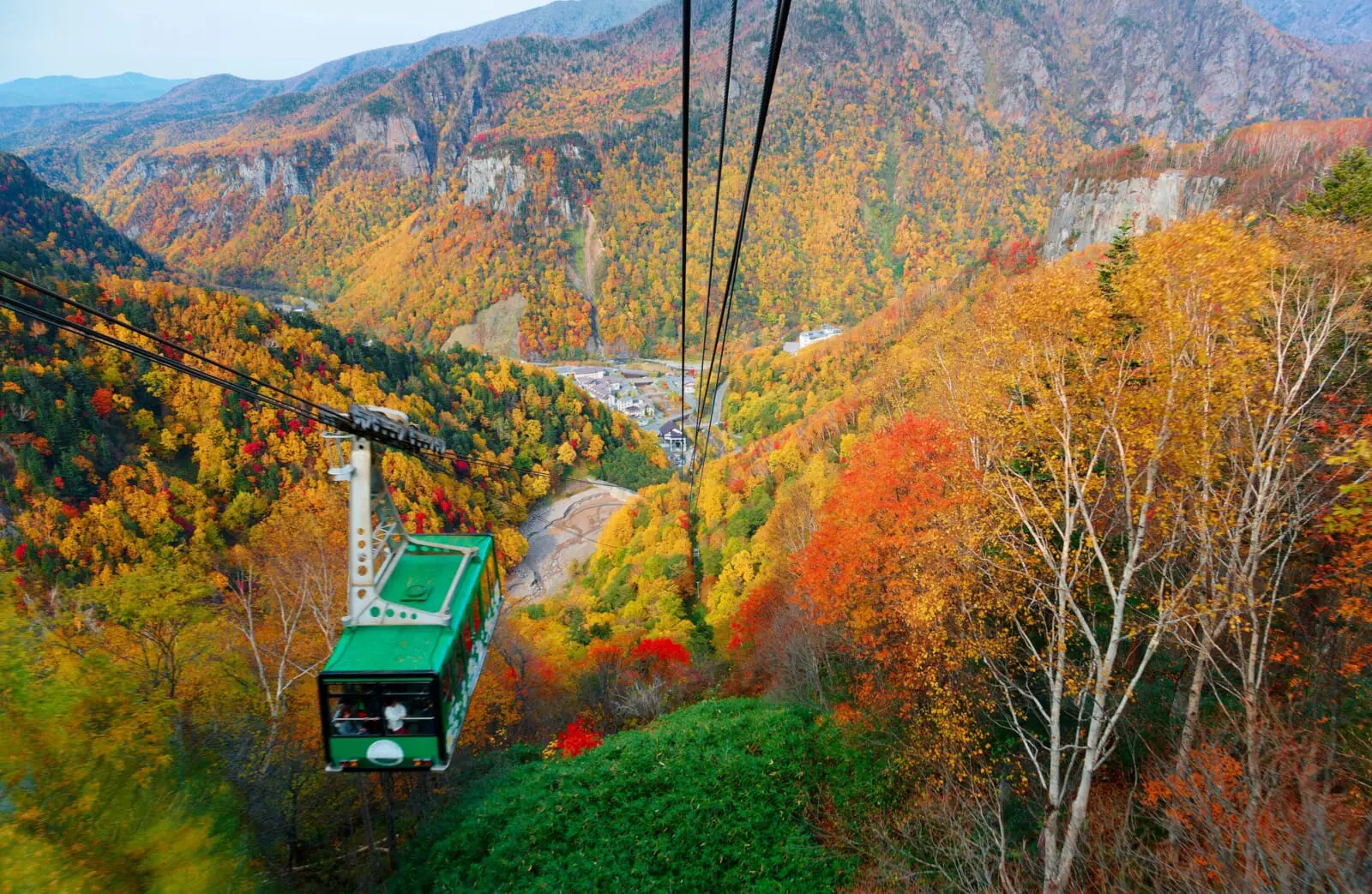
Daisetsuzan National Park, Hokkaido
As Japan’s largest national park, Daisetsuzan is one of the first places in the country to witness the stunning autumn colors. The park’s high altitude means that the leaves can begin to change as early as mid-September. The Asahidake Ropeway takes you up to the Asahidake summit, where you can start your hike surrounded by vibrant alpine vegetation and panoramic views of the park’s volcanic landscape. For those seeking a challenge, the trail to Kurodake offers a more strenuous hike with equally rewarding vistas.
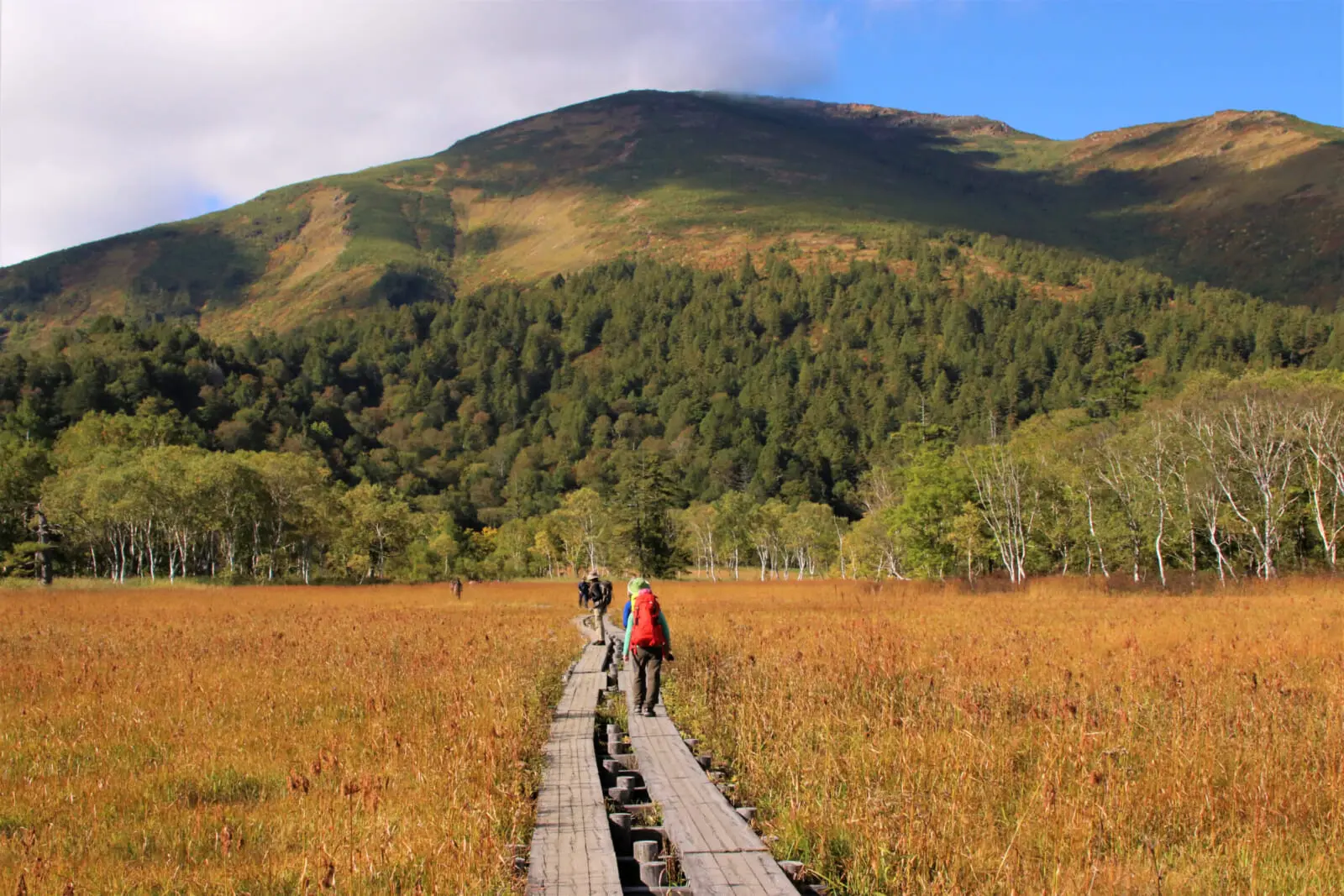
Oze National Park, Gunma-Fukushima-Niigata-Tochigi
Oze is famous for its expansive wetlands and is one of Japan’s most beloved hiking destinations. In autumn, the marshlands are covered in golden grass, and the surrounding mountains are ablaze with color. The Ozenuma Pond and Ozegahara Marshland offer relatively easy hikes with stunning views of the changing seasons.
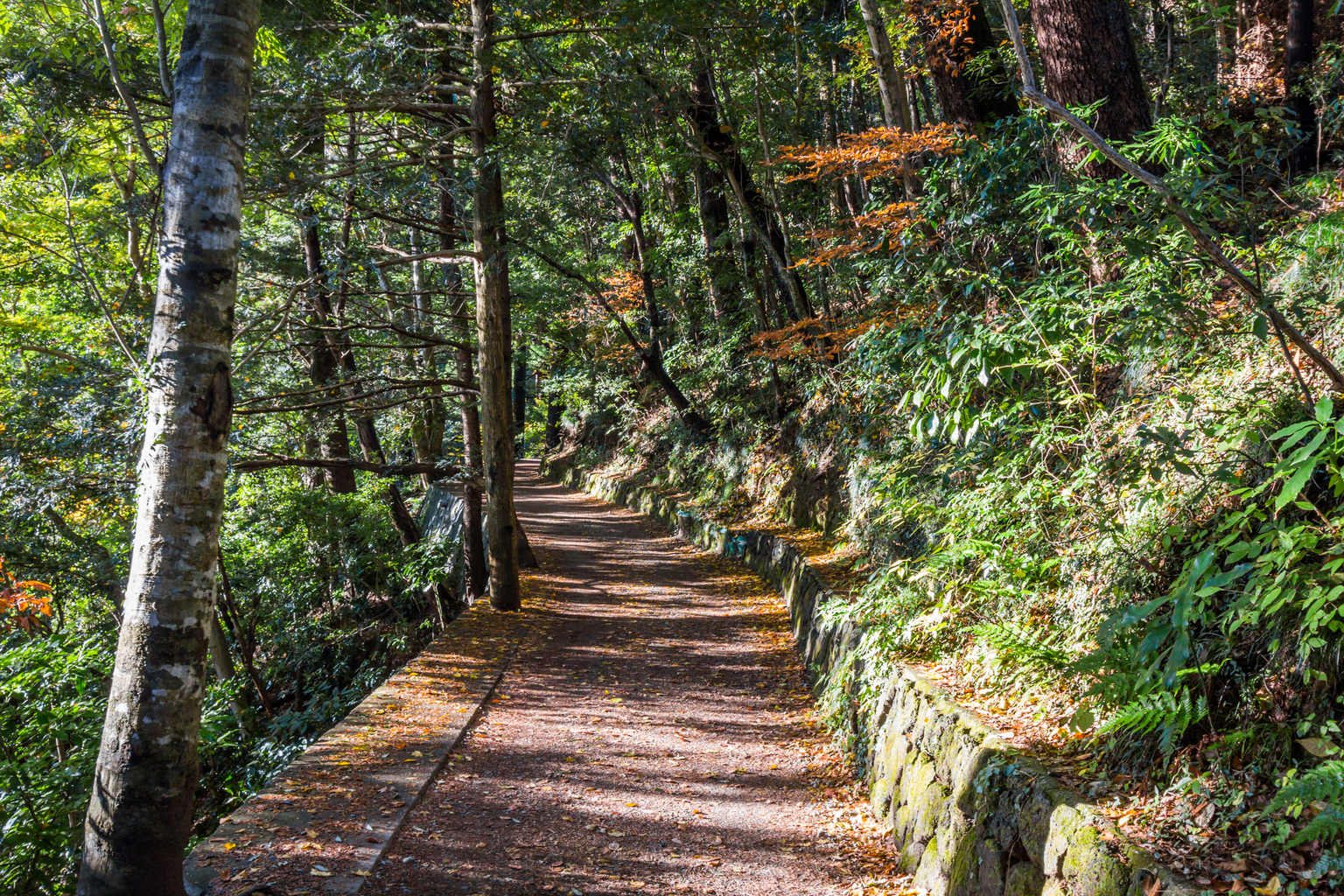
Mount Takao, Tokyo
Just an hour from central Tokyo, Mount Takao is a popular hiking destination that offers both convenience and natural beauty. The Takao Trail, which leads to the Yakuoin Temple and the summit, provides sweeping views of the city and, on clear days, even Mount Fuji.
Tips & Recommendations
Autumn weather in the mountains can be unpredictable, with temperatures varying significantly between morning and afternoon. Dress in layers that can be easily added or removed as needed. A lightweight, waterproof jacket is essential, as afternoon rain showers are common. Some trails, especially in national parks like Daisetsuzan and Oze, are remote and require proper preparation. Ensure you have a map, enough water and snacks, as well as information about the trail’s difficulty and duration.
Attending Traditional Festivals
September is filled with lively matsuri that showcase Japan’s rich cultural heritage. From energetic float races to peaceful lantern ceremonies, there’s something for every type of traveler.
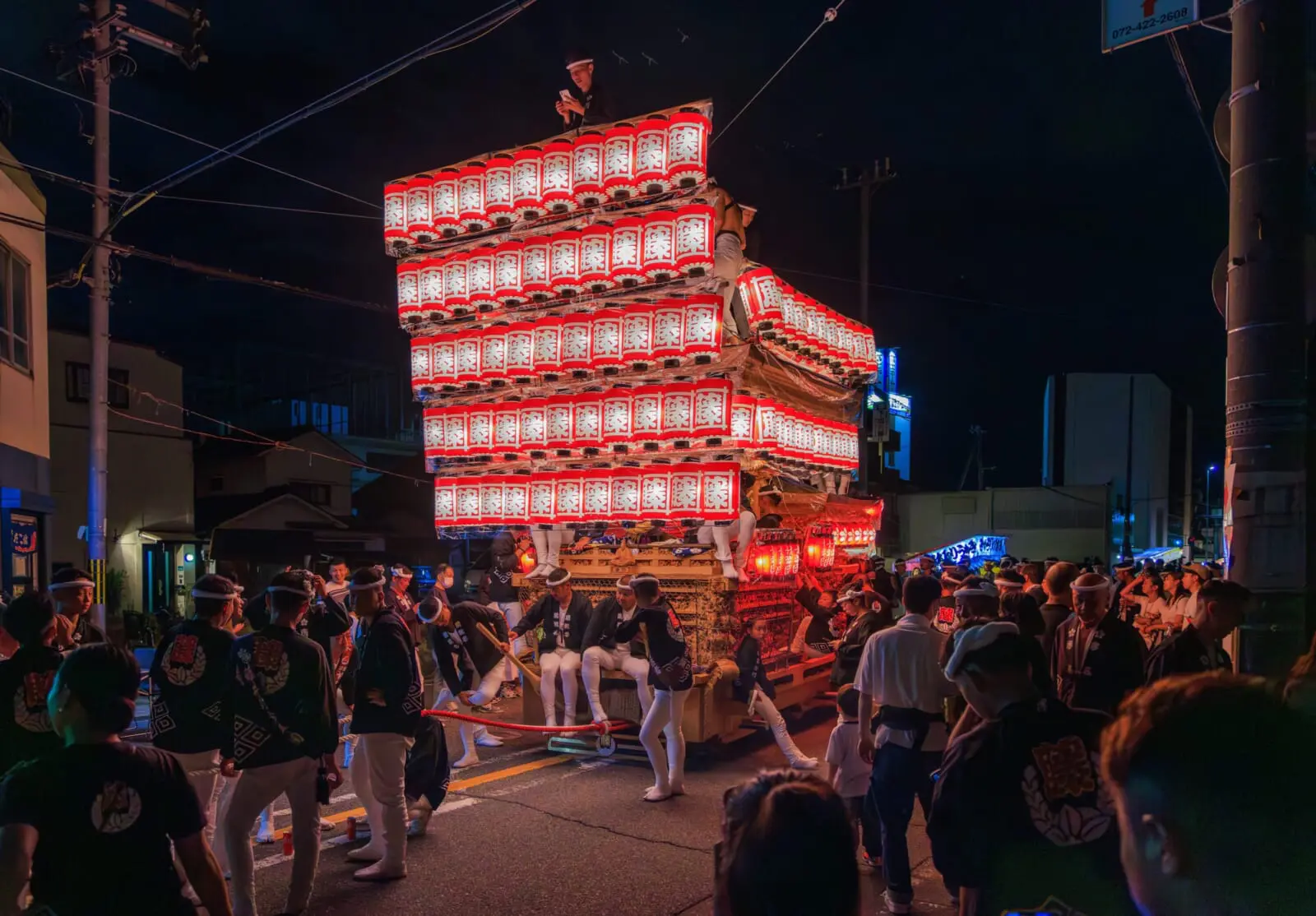
Kishiwada Danjiri Matsuri, Osaka
Held in the lively city of Kishiwada, this festival is renowned for its thrilling danjiri, or wooden float, races. These massive floats, each weighing several tons, are pulled through the narrow streets by teams of participants. The event is a true test of strength, coordination and community spirit, as the teams race at breakneck speeds, navigating sharp corners with incredible precision. The danjiri are works of art, adorned with intricate carvings and vibrant colors, making this festival as visually stunning as it is exhilarating.
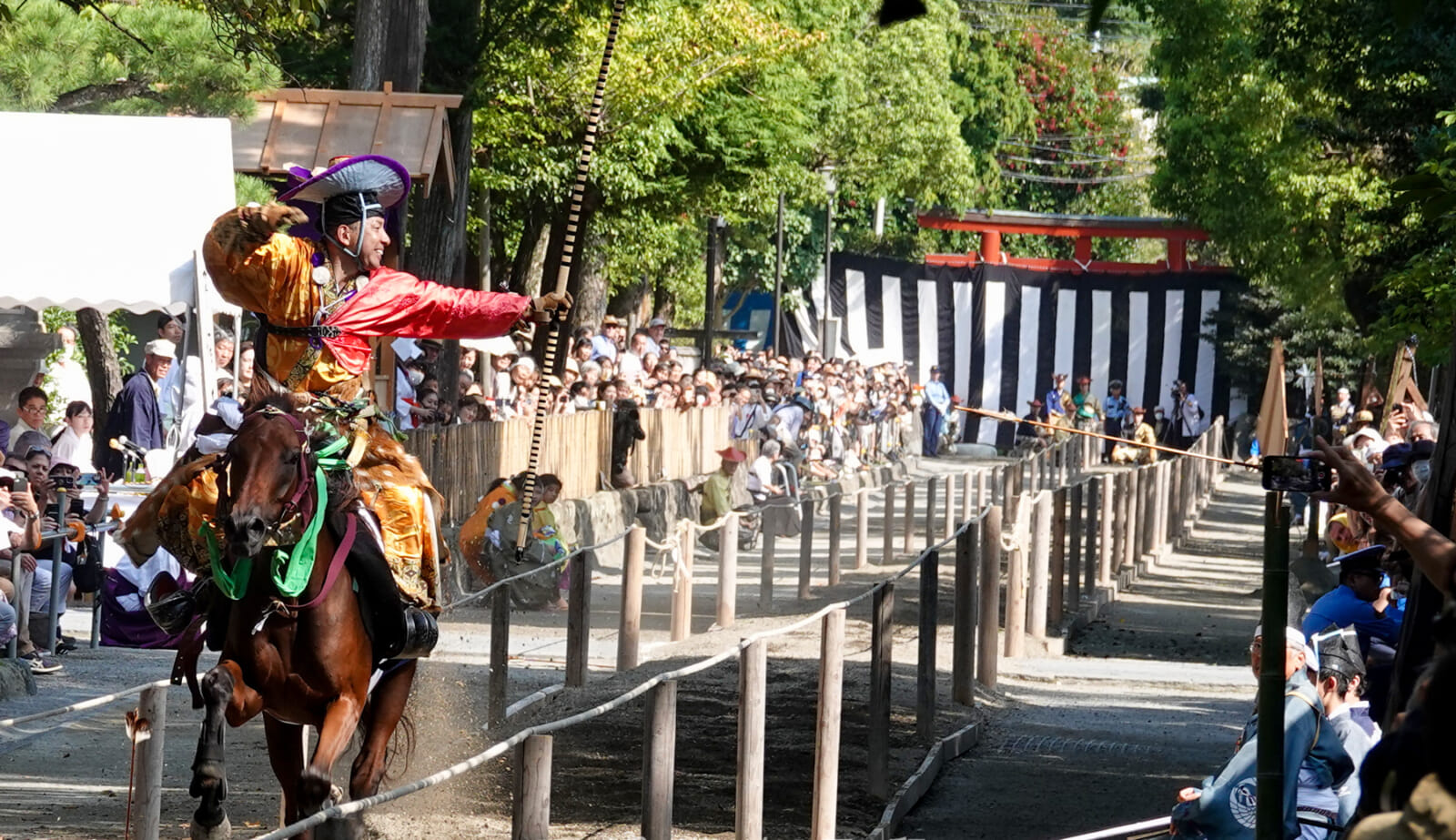
Tsurugaoka Hachimangu Reitaisai Festival, Kamakura, Kanagawa
Reitaisai at Tsurugaoka Hachimangu Shrine offers a more serene and reflective festival experience. The highlight of this event is the yabusame, a traditional Japanese martial art where archers on horseback shoot arrows at targets while galloping at full speed. The festival also includes a grand procession of mikoshi, or portable shrines, music and traditional dances, all set against the backdrop of Kamakura’s ancient shrines and temples.
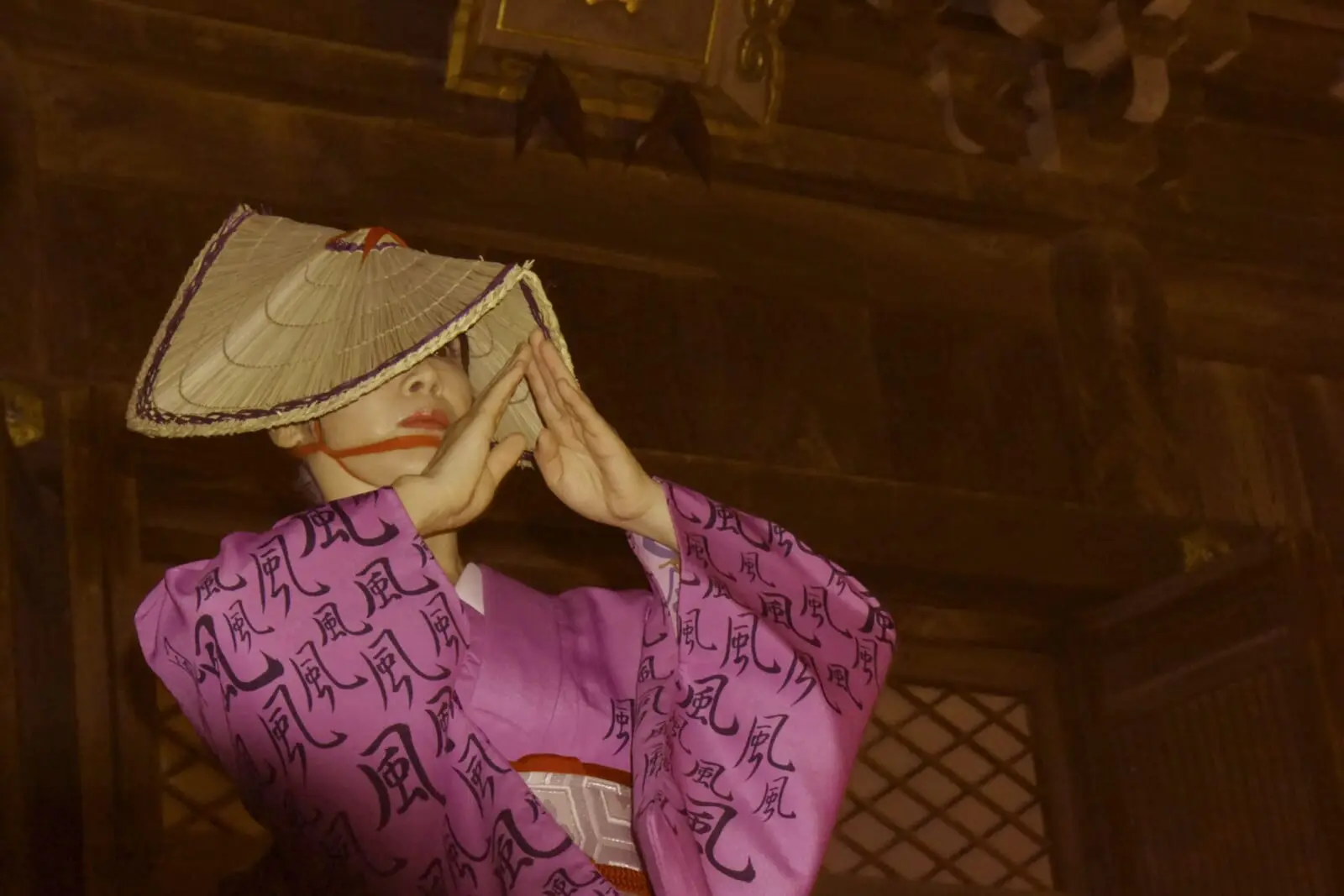
Owara Kaze no Bon, Toyama
This enchanting festival in the small town of Yatsuo, Toyama Prefecture, is a celebration of the wind and the harvest. The town’s streets are lined with paper lanterns, casting a warm, golden glow over the nighttime festivities. The main attraction is the Owara dance, a slow and graceful performance that reflects the delicate beauty of the season. Dancers in traditional kimono and wide-brimmed hats move in unison, their movements gentle and flowing, as if carried by the wind itself. The accompanying music, played on shamisen and kokyu, adds a hauntingly beautiful soundtrack to the evening.
Tips & Recommendations
Popular festivals like Kishiwada Danjiri and the Nihonmatsu Lantern Festival attract large crowds, so arriving early is essential to secure a good viewing spot. Even in September, festival days can be long and warm, especially in crowded areas. Carry a bottle of water and stay hydrated, especially if you plan to participate in or watch active events like float-pulling or processions.
Top Destinations To Visit in September
Hokkaido
Hokkaido is a paradise for nature lovers in September, with its early autumn colors and expansive landscapes. Visit Sapporo for a mix of urban and outdoor activities, or head to Furano to see the tail end of the lavender season and the start of autumn foliage. 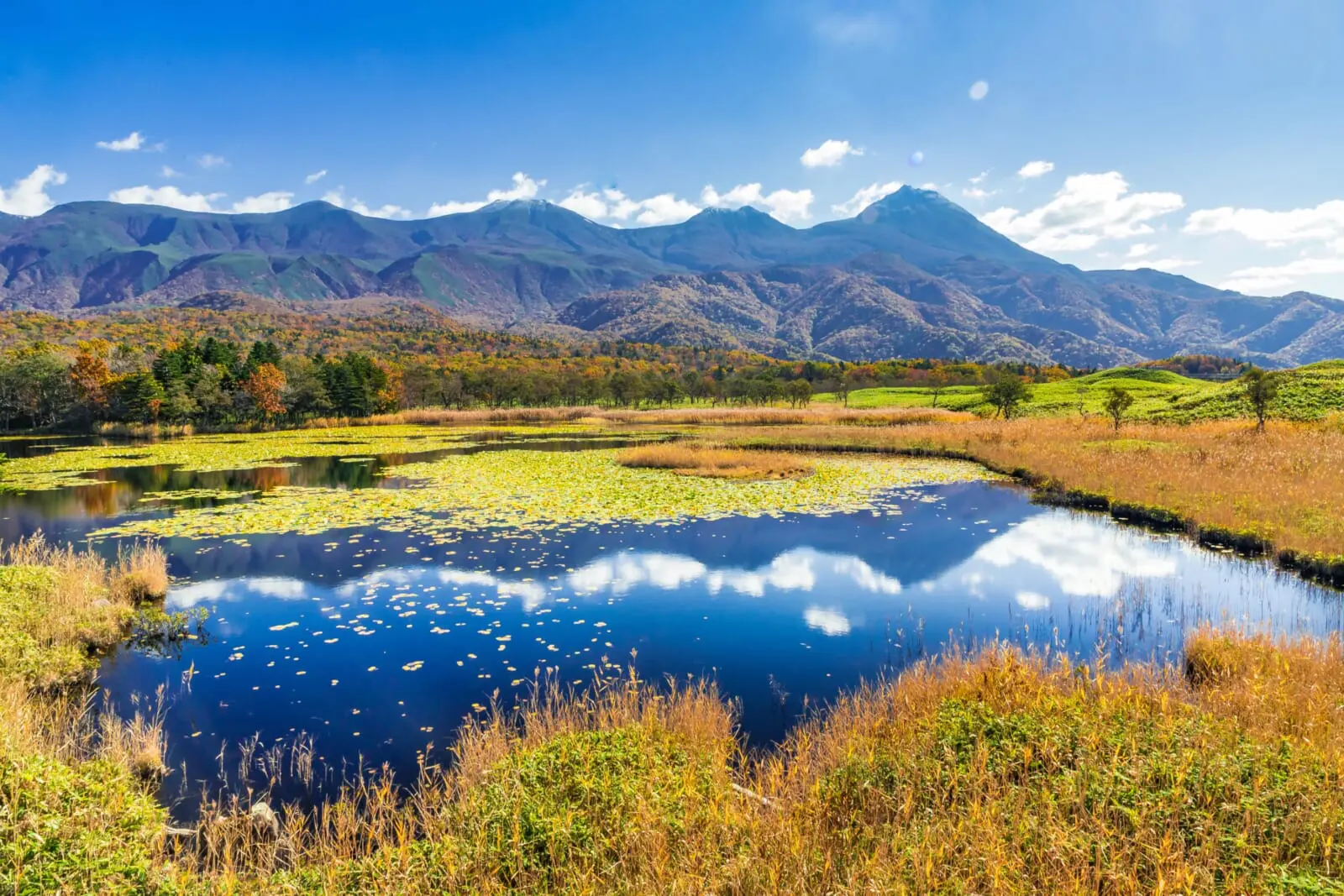
Shiretoko Peninsula
Located on the eastern edge of Hokkaido, the Shiretoko Peninsula is a UNESCO World Heritage Site renowned for its untouched wilderness and natural beauty. The peninsula is home to a rich variety of wildlife, including brown bears, deer and foxes, and offers breathtaking views of rugged cliffs, waterfalls and the Sea of Okhotsk. The five Shiretoko lakes, surrounded by dense forests, are especially picturesque during this time of year. Take a boat cruise along the coast to fully appreciate the dramatic landscape, or hike one of the many trails that offer panoramic views of the autumn foliage.
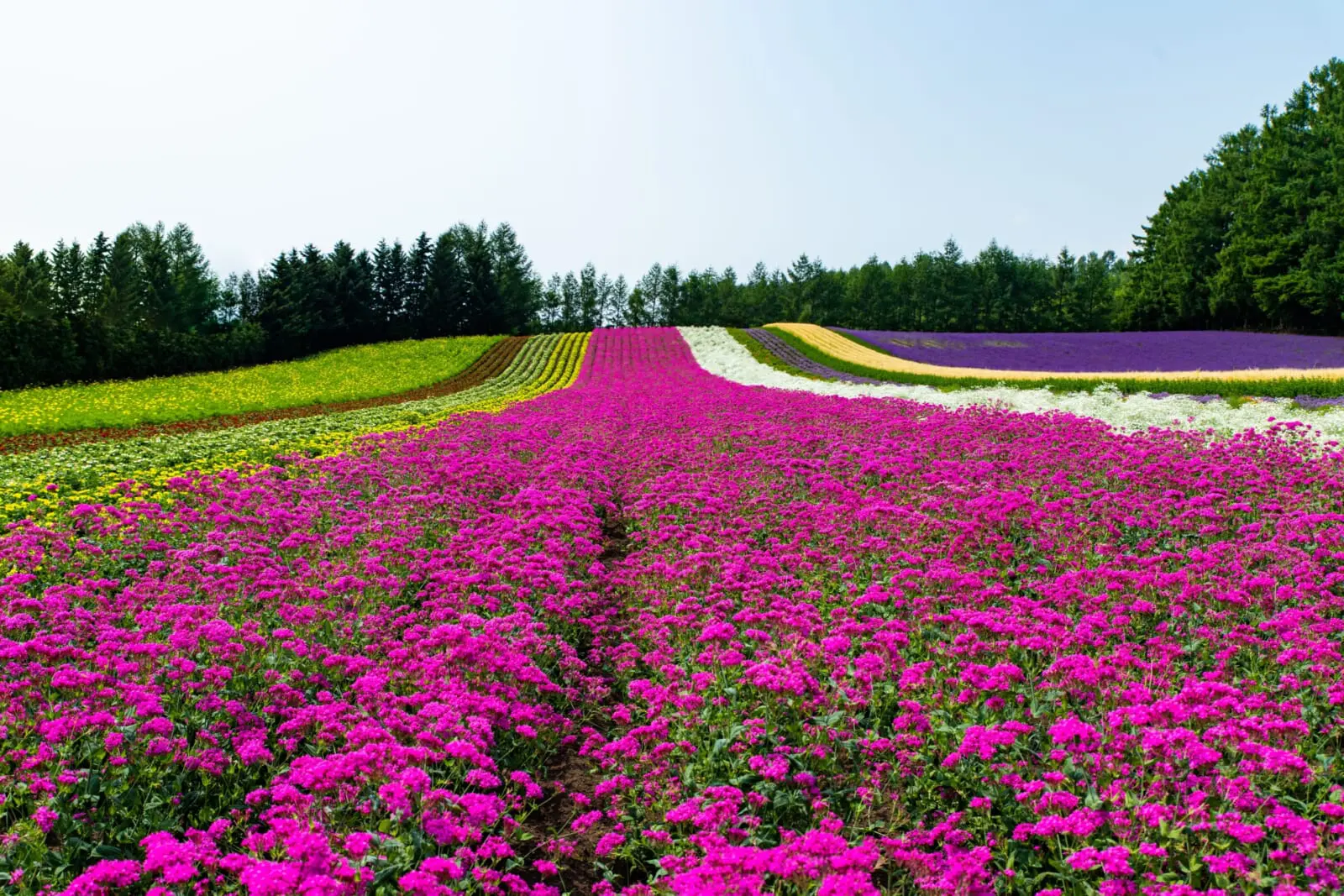
Furano and Biei
Known for its stunning flower fields in summer, Furano transitions into a picturesque autumn landscape in September. While the lavender season has just ended, the region is now adorned with patches of cosmos, dahlias and sunflowers that add bursts of color against the backdrop of rolling hills. Nearby Biei, with its undulating fields and iconic Shirogane Blue Pond, offers equally breathtaking views. The hills of Biei, often compared to Tuscany, are a mosaic of autumn colors, perfect for leisurely drives or cycling. Don’t miss the Panorama Road, which offers spectacular vistas of the patchwork fields against the backdrop of Mount Tokachi.
Cuisine & Culture
Hokkaido is famous for its fresh seafood, and September is an excellent time to sample some of the best. Try Hokkaido’s signature dishes, such as crab and ikura (salmon roe) and uni (sea urchin). Head to the coastal cities such as Otaru or Hakodate for seafood markets, where you can enjoy these delicacies straight from the sea. Another must-try is the local specialty, soup curry, a flavorful dish that combines a spiced broth with vegetables, meat and rice. September is also the time for local harvest festivals, where you can experience Hokkaido’s rich agricultural heritage. Attend events like the Furano Wine Festival, where you can sample locally produced wine while enjoying live music and food stalls.
Hokkaido Tips & Recommendations
Hokkaido’s beauty lies in its vast, open landscapes, and the best way to explore them is by car. Renting a car gives you the flexibility to visit remote areas like Furano and Shiretoko at your own pace.
Kyoto
Kyoto in September offers a mix of lingering summer warmth and the start of cooler autumn days, making it perfect for temple and garden visits. The city’s famous sites like Kinkakuji, Fushimi Inari Shrine and Arashiyama Bamboo Forest are slightly less crowded than in peak seasons.
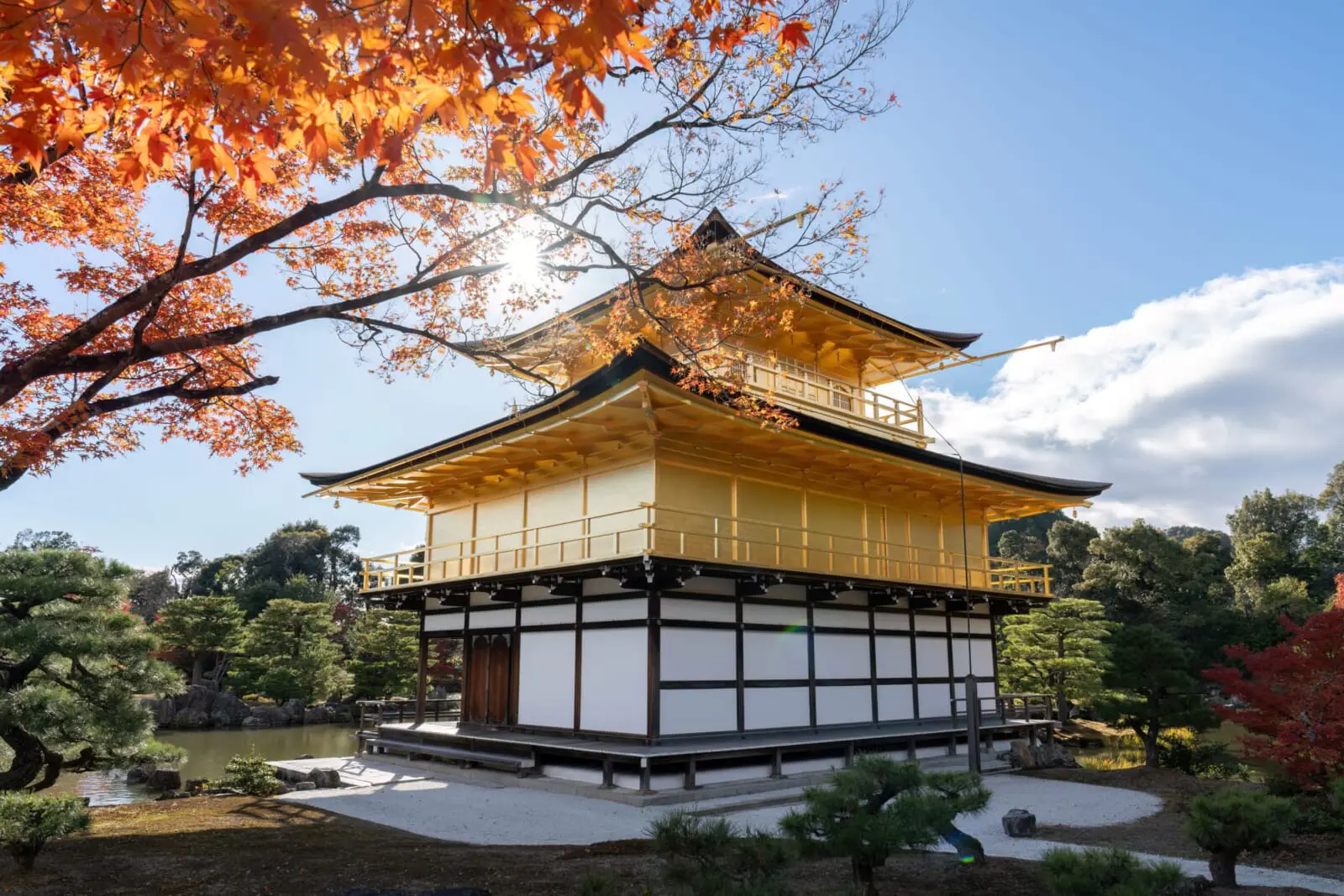
Kinkakuji (Golden Pavilion)
In September, Kinkakuji’s shimmering gold leaf exterior contrasts beautifully with the deep greens of the surrounding pines. The reflection of the pavilion in the mirror-like Kyokochi Pond is particularly striking in the soft, golden light of late afternoon. Take a quiet stroll around the garden, where the pathways meander through meticulously manicured landscapes.
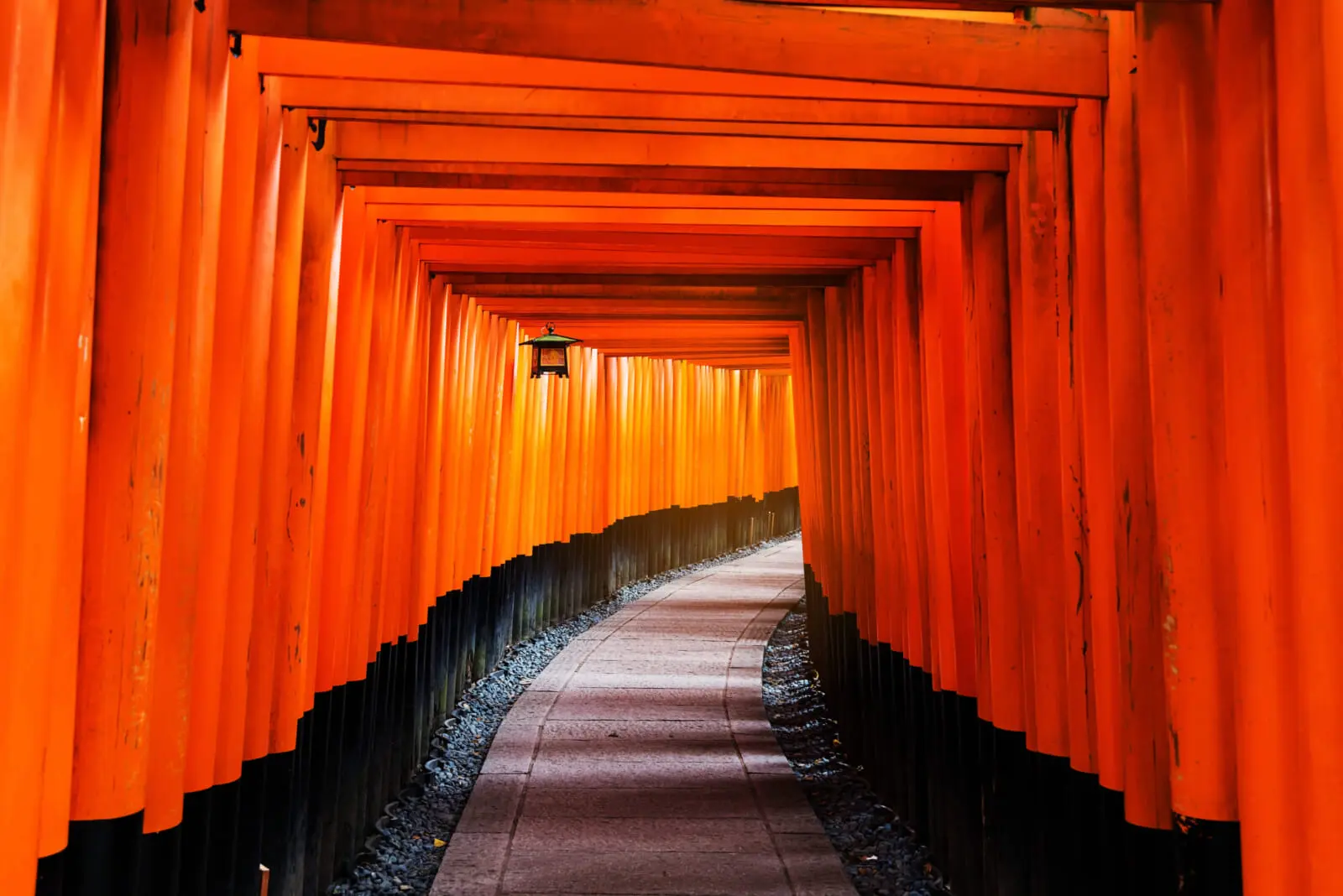
Fushimi Inari Shrine
Famous for its thousands of vermilion torii gates, Fushimi Inari is a must-visit in any season, but September offers a slightly more tranquil experience as the summer crowds dissipate. The cooler weather makes the hike up Mount Inari more comfortable, and the forested paths are shaded and peaceful. As you ascend, you’ll encounter smaller shrines, stone fox statues and the occasional glimpse of Kyoto’s cityscape below, all framed by the vivid torii gates.
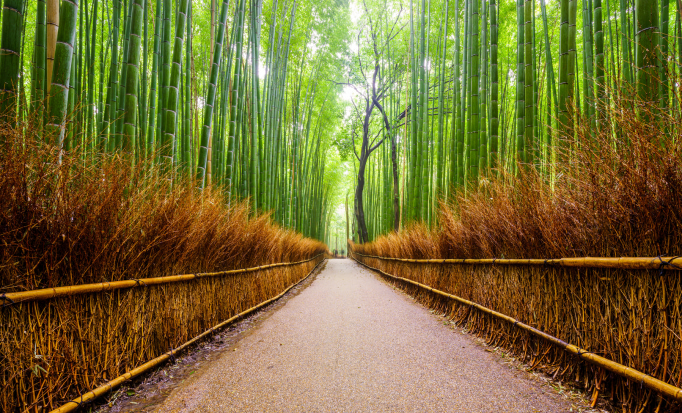
Arashiyama Bamboo Forest
In the early mornings of September, the Arashiyama Bamboo Forest is bathed in soft, filtered light, creating an almost ethereal atmosphere. The towering bamboo stalks, gently swaying in the breeze, create a natural symphony that’s both calming and awe-inspiring. After wandering through the grove, cross the Togetsukyo Bridge, where the Katsura River flows serenely beneath.
Cuisine & Culture
Kyoto is the birthplace of kaiseki, a traditional multi-course meal that is as much about aesthetics as it is about taste. September’s kaiseki menus reflect the changing seasons, with dishes featuring seasonal ingredients like matsutake mushrooms, sweet potatoes and chestnuts. As the evenings begin to cool in September, there’s no better comfort food than yudofu, a simple yet flavorful tofu hot pot. Made with Kyoto’s famously soft tofu, the dish is served with a variety of dipping sauces and seasonal vegetables.
Kyoto Tips & Recommendations
Kyoto is a city best explored on foot, with its narrow streets, hidden alleys and numerous temples and gardens. Wear comfortable shoes to make the most of your day, especially if you plan to visit multiple sites. For a truly immersive experience, consider staying in a traditional ryokan. These Japanese inns offer tatami mat rooms, futon beds and often include kaiseki meals. Staying in a ryokan also allows you to enjoy the seasonal changes up close, as many ryokans feature beautiful gardens that reflect the natural beauty of Kyoto.
Nikko
Nikko is rich in history and full of stunning nature, making it a popular place to-visit in September.
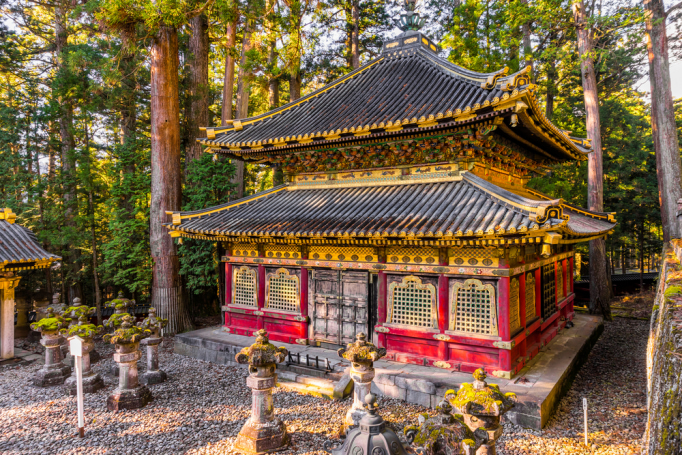
Nikko Toshogu Shrine
The crown jewel of Nikko, Toshogu Shrine is a UNESCO World Heritage Site that dazzles with its elaborate carvings, gold leaf decorations and intricate woodwork. Dedicated to Tokugawa Ieyasu, the founder of the Tokugawa Shogunate, the shrine is surrounded by ancient cedar trees. Be sure to visit the famous Nemuri Neko (Sleeping cat carving) and the Five-Story Pagoda, both of which are iconic symbols of Toshogu’s artistic and spiritual significance.
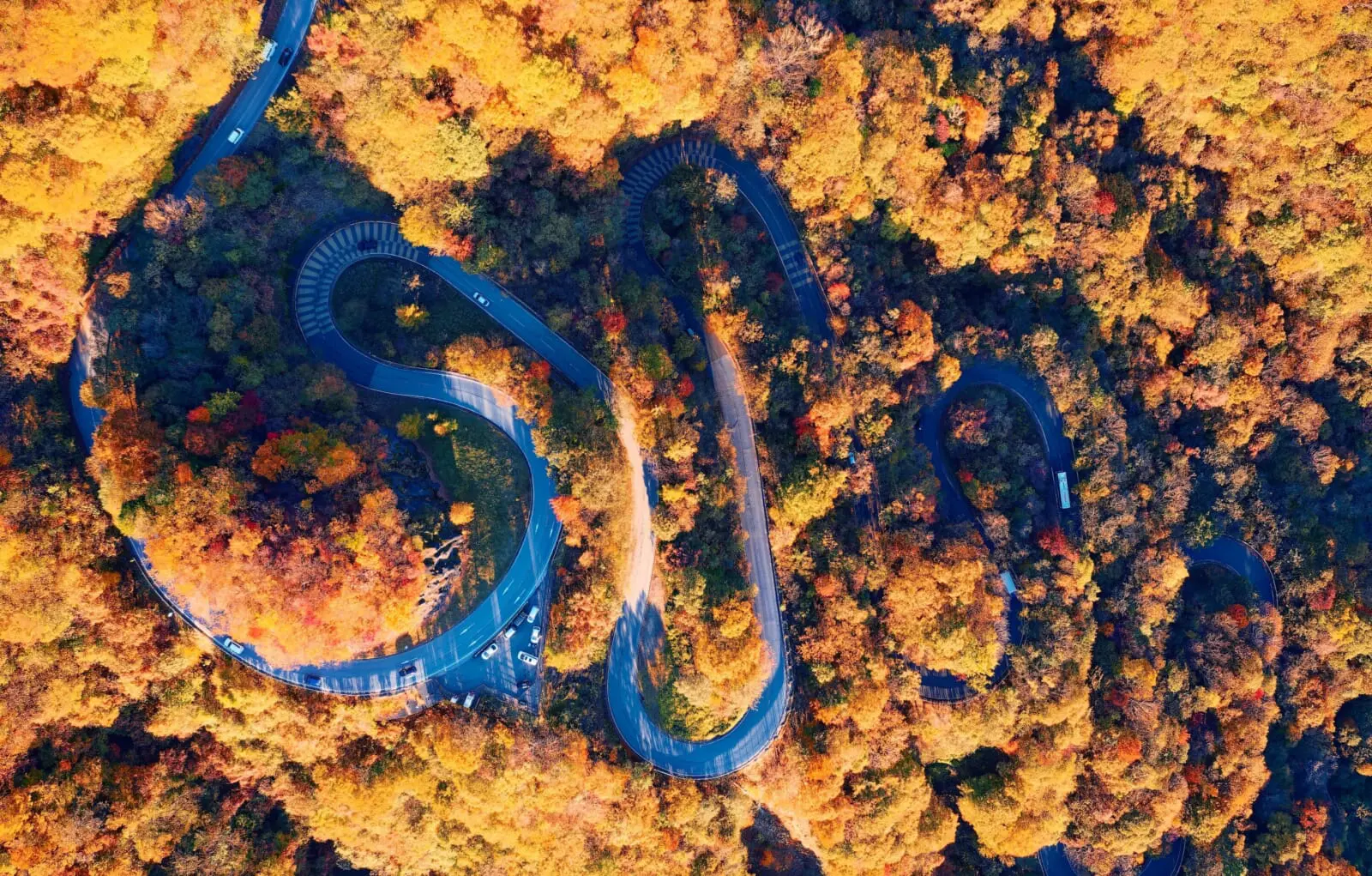
Irohazaka Winding Road
The Irohazaka Winding Road is an exhilarating drive that offers some of the most breathtaking views in Nikko. Comprising 48 hairpin turns that ascend the mountains, this road connects the lower town of Nikko with the Okunikko region. In September, as you navigate the twists and turns, you’ll be treated to panoramic vistas of the surrounding mountains, which begin to light up with the first touches of autumn foliage. The journey culminates at the Akechidaira Ropeway Observation Deck, where you can take in sweeping views of the Kegon Falls and Lake Chuzenji.
Cuisine & Culture
Tochigi Prefecture is known for its high-quality sake, thanks to the pure mountain water and cool climate. In Nikko, you can visit local breweries to sample a variety of sake, from light and crisp varieties to richer, more full-bodied brews. Many breweries offer tours where you can learn about the traditional sake-making process and the importance of local ingredients. After a day of exploring, there’s nothing more relaxing than soaking in one of Nikko’s many hot spring baths. The mineral-rich waters are said to have healing properties, and the outdoor baths offer stunning views of the surrounding nature. Yunishigawa Onsen, in particular, is a charming hot spring village where you can enjoy a quiet and rejuvenating experience surrounded by mountains.
Nikko Tips & Recommendations
To enjoy the tranquility of Nikko’s most famous sites, such as Toshogu Shrine and Kegon Falls, it’s best to visit early in the morning before the crowds arrive.

Travel Tips and Recommendations
Transportation
Despite the increase in price, the Japan Rail Pass (JR Pass) is still a good option for tourists planning to travel long distances, offering unlimited rides on JR trains, including the Shinkansen. It’s particularly cost-effective for trips between major cities like Tokyo, Kyoto and Osaka. For island destinations like Okinawa, domestic flights are quickest, with budget carriers like Peach Aviation offering frequent connections. Ferries are an option for a scenic route to Okinawa and smaller islands. For city travel, IC cards (Suica, Pasmo) streamline transit on trains, buses and even at convenience stores.
- JR Pass: https://japanrailpass.net/en/
- Peach Aviation: flypeach.com
Accommodation Recommendations
Book early, especially during Silver Week. Traditional ryokan offer an authentic experience with tatami rooms and hot spring baths, while minshuku (family-run inns) and temple lodgings provide a cultural stay. In cities, modern hotels and guesthouses cater to all budgets.
Packing Tips
Pack light layers for fluctuating temperatures and bring a rain jacket or umbrella for unexpected showers since typhoon season is in September. Comfortable, easy-to-remove shoes are ideal for visiting temples.
Budget Planning
Use regional rail passes for specific areas to save money on transportation. Look for discount tickets and combination passes for museums and attractions. Keep some cash on hand for rural areas and small purchases.
Regional Rail Passes: https://www.jrpass.com/regional-passes
